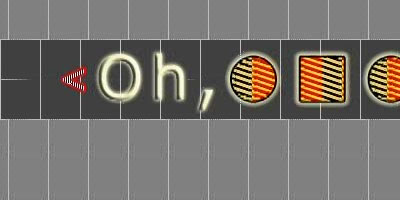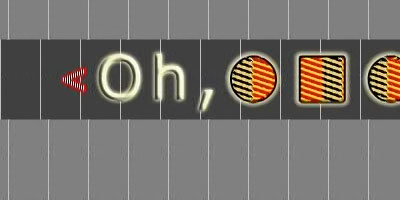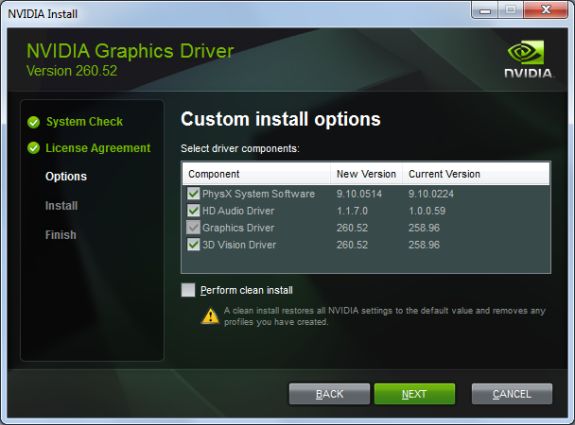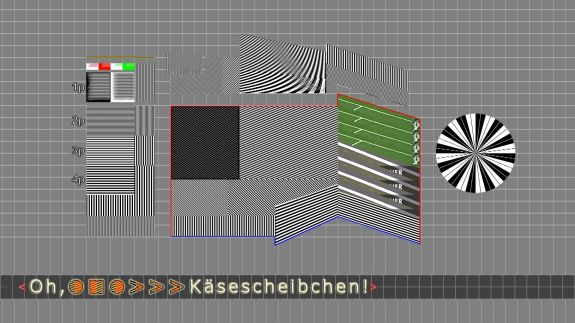NVIDIA’s GeForce GTS 450: Pushing Fermi In To The Mainstream
by Ryan Smith on September 13, 2010 12:02 AM EST- Posted in
- NVIDIA
- Fermi
- GeForce GTS 450
- GF106
- GPUs
Forceware 260 & Bitstreaming Audio
Launching alongside the GTS 450 is NVIDIA’s Forceware 260 driver series, which should be available for download later this morning. This release brings an interesting mix of changes to performance, features, and even the installation routine.
We’ll start with the installer. The old Installshield installer is out in favor of a new NVIDIA-developed installer. By moving to their own installer, NVIDIA was able to do some consolidation and some simplification of the install process. Consolidation comes in the form of all of NVIDIA’s major driver packages being in the same installer. Previously the 3D Vision driver set was a separate download from the main drivers; now they’re part of the main driver bundle. In exchange for consolidating their drivers, NVIDIA now offers the ability to pick & choose which driver components to wish to install; currently there are the main drivers, PhysX, the audio drivers, and the 3D Vision drivers. If you’ve used the AMD Catalyst installer, then you should be familiar with this.
Meanwhile simplification comes from a few different changes. When doing a custom installation NVIDIA offers the ability to do a clean install straight from the driver installer, vastly simplifying the clean install process and eliminating the need for a 3rd party utility to do this. Do keep in mind however that a clean install cleans everything including saved profiles, and under normal circumstances a clean install should not be required.
The other reason we call these drivers simple is that the new installer is much faster than the old Installshield installer. NVIDIA specifically cites SLI situations – where the old installer would install the same drivers twice (once for each card) – but even in a single card situation the process is noticeably faster; we shaved 15 seconds off of the installation process compared to the 258.96 drivers. With any luck you aren’t installing drivers often enough that 15 seconds makes a huge difference (and if you are, you’re probably me) but if you are, then there’s definitely a perk for you in these drivers.
Finally, the size of the driver package remains virtually unchanged from the previous driver release. Our 64bit 260.52 international beta installer is 154MB, while the 64bit 258.96 international installer is 153MB; if anything it’s slightly smaller after factoring in the fact that it now contains the 3D Vision drivers too. But it goes without saying that modern video drivers from both AMD and NVIDIA are ridiculously huge, and this new installer doesn’t do anything to change that.
Meanwhile NVIDIA is also pushing this driver release as another big performance-boosting release. Compared to the 256 release for the GTX 460 it’s not nearly as large or as widespread of a performance boost, but there are several targeted titles that got performance boosts, mostly in SLI mode. As far as our own benchmark suite is concerned, the only titles we saw receiving a major improvement in single-GPU operation were Mass Effect 2 where performance improved 11% with our 768MB GTX 460, and STALKER: Call of Pripyat where performance improved 5% on the same card at the same resolution.
Finally, this release enabled bitstreaming audio for the newer members of the 400 series. As you may recall in our GTX 460 article, starting with GF104 NVIDIA has given the hardware the capability to bitstream the lossless audio formats DTS-HD Master Audio and Dolby TrueHD; GF100 and GT21x were limited to 8 channel LPCM. When the GTX 460 launched the drivers weren’t ready, and only unprotected bitstreaming was working. With this release the protected audio path is working, allowing bitstreaming of lossless audio from protected sources such as Blu-Ray discs.
We didn’t have the chance to test this on a GTS 450 as we had to catch a flight to IDF, however we did test this against a GTX 460 with the new drivers and it worked as it was supposed to.

Cheese Slices: GTS 450 Deinterlacing

Cheese Slices: Radeon HD 5670 Deinterlacing
For those of you looking at a GTS 450 as an HTPC card, we also quickly ran our favorite Cheese Slices test as a quick look at deinterlacing quality. As this is a test of computer power (if you have enough shaders, you can pass the test) there aren’t any huge surprises here. When compared to the Radeon HD 5670, the GTS 450 does a slightly better job properly deinterlacing the angled lines within the shapes at the bottom of the screen, but it does a poorer job deinterlacing a box full of angled lines elsewhere on the screen. Overall this is a wash between the two cards and par for the course for modern cards with this test.
On one last note, these don’t appear to be NVIDIA’s best drivers with respect to everything working. The 260.52 beta drivers we’re using have a bug in OpenCL that keeps it from working, which is why you will see that we have dropped OpenCL benchmarks in today’s review. NVIDIA tells us that the version of the 260 drivers being released later this morning have the issue fixed, but it’s not a particularly encouraging sign since we don’t normally run in to issues with their beta drivers.
















66 Comments
View All Comments
just4U - Monday, September 13, 2010 - link
Here in Canada I haven't really seen any 5850's priced under 300 yet and most are up in the 330 range.. The 1G 460 sit's in the 220-240 (no price drops for us) so it's a tempting alternative for many (I think)I also believe the 5850 will be a $200 card sometime in the near future. It's been selling way above it's suggested retail price (at launch) and when that happens it will be harder to consider the 460 as a viable alternative. I can't see it being sold at $150 (for the 1G variants) any time soon... so only fan's of Nvidia would consider it if it's priced in the 5850s range.
jabber - Monday, September 13, 2010 - link
Big thing is...who actually bought a 5830?When it came out everyone said it was a pointless card so big whoop, Nvidia's 460 beats a card that should never have been released in the first place.
Bit like saying "our car out performed the Ford Edsel!"
If you want middle of the road performance you get a 5770, if you want a better boost you get the 5850.
just4U - Monday, September 13, 2010 - link
It was only a pointless card because of it's price... Originally it should have been alot cheaper but supply and demand has inflated the prices of most of Amd's 5X lineup. Sitting near a $100 more then the 5770 is what made it a hard sell.erple2 - Wednesday, September 15, 2010 - link
Sure it did - the 768MB version fo the 460 now gave you 5830 performance for > 10% less money. To me, that makes it sound like the 5830 was now "obsoleted" by the 460 series. The 1 GB card was significantly faster at the same price point, and the 768 MB version was just as fast, but significantly cheaper. Both using less power, noise and heat.Isn't that essentially what defines "obsoletes"?
SandmanWN - Monday, September 13, 2010 - link
Throughout the entire test suite the 5850 is within 4-6 frames of the 470. In two it makes it to 8 and 10 frames more. Given you need an extra 100W's on your power supply and the additional cost associated with that just to get that tiny fraction of output, the statement seems fanboyish. AT should be better than this.just4U - Monday, September 13, 2010 - link
What does the 470 have to do with this? Most of us all agree that the 465/470/480 are all heat scores with insane power draws.. the 460 addressed that and came in at a price point that hit a sweet spot.. bringing alot of the 470/480's strengths and none of it's weaknesses to the table. Only real complaint I've seen for the 460 is the mini hdmi.IceDread - Tuesday, September 14, 2010 - link
You are missing my point.By saying "and it struck beautifully" implies that you are cheering for the nvidia team. It would be a different thing if he wrote "and it struck hard" or something like that.
adonn78 - Monday, September 13, 2010 - link
I read another review, damn my cheating heart. That stated the SLI scalling ont hese cards were impressive. You got 2 GTS 450 cards but no SLI?Stuka87 - Monday, September 13, 2010 - link
Er, every single benchmark shows the GTS-450 SLI scores. They are marked in green (like the regular GTS-450).marraco - Monday, September 13, 2010 - link
Other web sites show that the 450 is slower than the 250.It's strange when the 250 has 128 shaders, and the 450 has 192.... and the 450 has DDR5 vs DDR3 in the 250.
It looks like the texture units bottleneck this design.
Even more strange is that I could not find the 250 on this article charts.
I don't see the 450 as price competitive with the radeons, except as SLI setup. It would be more valuable if 3-SLI way were allowed, and I guess that is not the case, because the photos shown only a single SLI connector.
The SLI setups are unbeatable against the radeons price/performance. Maybe nVidia should design cheap, energy-efficient chips so a card manufacturer can pack 10 video chips on a single card.